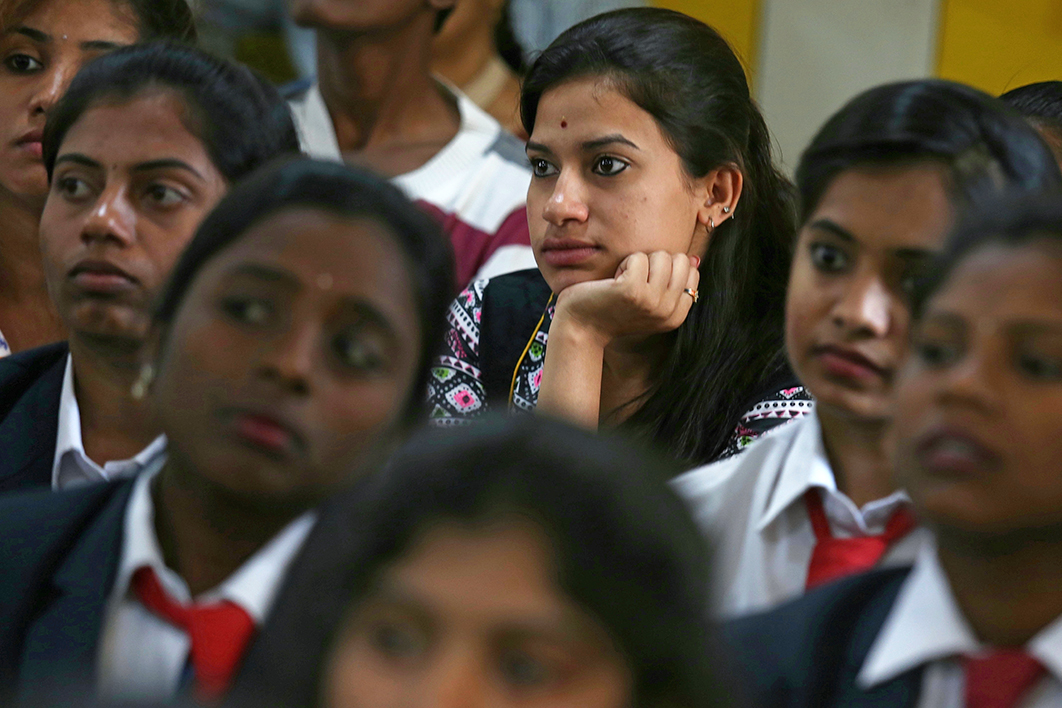As aspiring global powers, China and India are often compared economically. Their geopolitical intentions are pored over, as is their evolving relationship. What we don’t hear much about is how they are responding to one of the key issues of the age, the fight for gender equality inspired by the #MeToo movement.
Yet India has done something that its massive neighbour wouldn’t countenance. Last month, Narendra Modi’s government requested the resignation of the minister of state (or junior minister) for external affairs, M.J. Akbar, after mounting evidence suggested that he had misused his position as a newspaper editor to proposition and harass women. The #MeToo movement had claimed its first significant scalp in India.
Despite being an internet-based phenomenon in a country where a significant digital gender gap persists, the movement took India’s social media by storm. It all started when Bollywood actor Tanushree Dutta called out the veteran star Nana Patekar for harassing her on film sets a decade earlier. Then one journalist after another used social media and websites to narrate their horror stories about Akbar.
Initially, the government decided to weather the storm. But it soon turned into a whirlwind that threatened to bring it down. When journalists raised questions with the senior external affairs minister, Sushma Swaraj, she evaded them. But silence was no longer golden. Ministers were repeatedly asked the same question: could Akbar continue in a government that famously adopted the slogan “Beti Bachao Beti Padhao” (“Save daughters, educate daughters”), and especially one that has shown its support for female participation by giving two key portfolios, defence and external affairs, to women?
Akbar’s resignation was #MeToo’s first victory within the Indian government, but the journey is far from over. The movement has yet to reach rural and undeveloped India, where women’s voices are still not generally heard, and many women still face patriarchal questioning and misogynist comments the moment they step out of their homes.
Perhaps the hope for change rests with those who wish to join the movement by talking about a pattern of harassment, rather than by naming and shaming their perpetrators. Khabar Lahariya, a rural news website, has chronicled struggles in smaller towns of the hinterland, publishing heart-wrenching testimony about how women are assumed to be open to advances from men. Male editors — often products of deep caste fissures — have reinforced a similar culture in the newsrooms of the vernacular-language press and regional news channels.
Besides Akbar, several top editors have been forced to quit after their names surfaced on public platforms. Harassers have been shamed even within the Board of Control for Cricket in India. Other institutions have also come under fire. A process of far-reaching change is gathering momentum.
In China, meanwhile, the nervous and repressive atmosphere under Xi Jinping means that any kind of activism not mandated by the government is regarded dimly. Mao Zedong’s regime famously declared that “women hold up half the sky,” but there are no women on the party’s central standing committee and just two in a Politburo of twenty-four; and only a quarter of the ninety-million-strong membership of the party is made up of women. In the business world, women have been successful and treated as equals, but even there the price of success is often to work in a world dominated by men.
#MeToo did gain some limited traction in the People’s Republic, though it is hard to think of a Chinese equivalent of Akbar. Senior political figures have been accused of supporting multiple mistresses, with their largesse often the cause of their downfall for reasons of corruption rather than sexual exploitation or abuse. But the idea that the testimony of one person could bring down a key member of the central government is largely regarded as a Western-style indulgence.
#MeToo’s early impact is in Chinese universities, businesses and other sectors outside politics. It could easily accelerate: with fifty million fewer Chinese women than men, women’s demands of potential husbands are increasing, and their status is rising as a result. This demographic shift may yet prompt the same kind of upheaval that is happening in India.
The two cases show that, despite China’s economic success, there are things that India — with its more flexible and less centralised social and political model, and greater degree of pluralism — seems better able to handle. For all the challenges it has faced recently, it is doing better than China in this respect.
Of course, Chinese leaders could argue that India has had to face up to horrendous cases of abuse, rape and murder of women in recent years. But at least that violence has prompted widespread soul-searching and attempts to turn things around. In China, such candour is difficult or even impossible, especially when it is seen to be critical of the government. If India does create a culture in which women are genuinely equal, it will have a massive advantage over a China in which significant barriers — visible and invisible — continue to prevent women from fully participating in the political and social direction of their country. •




